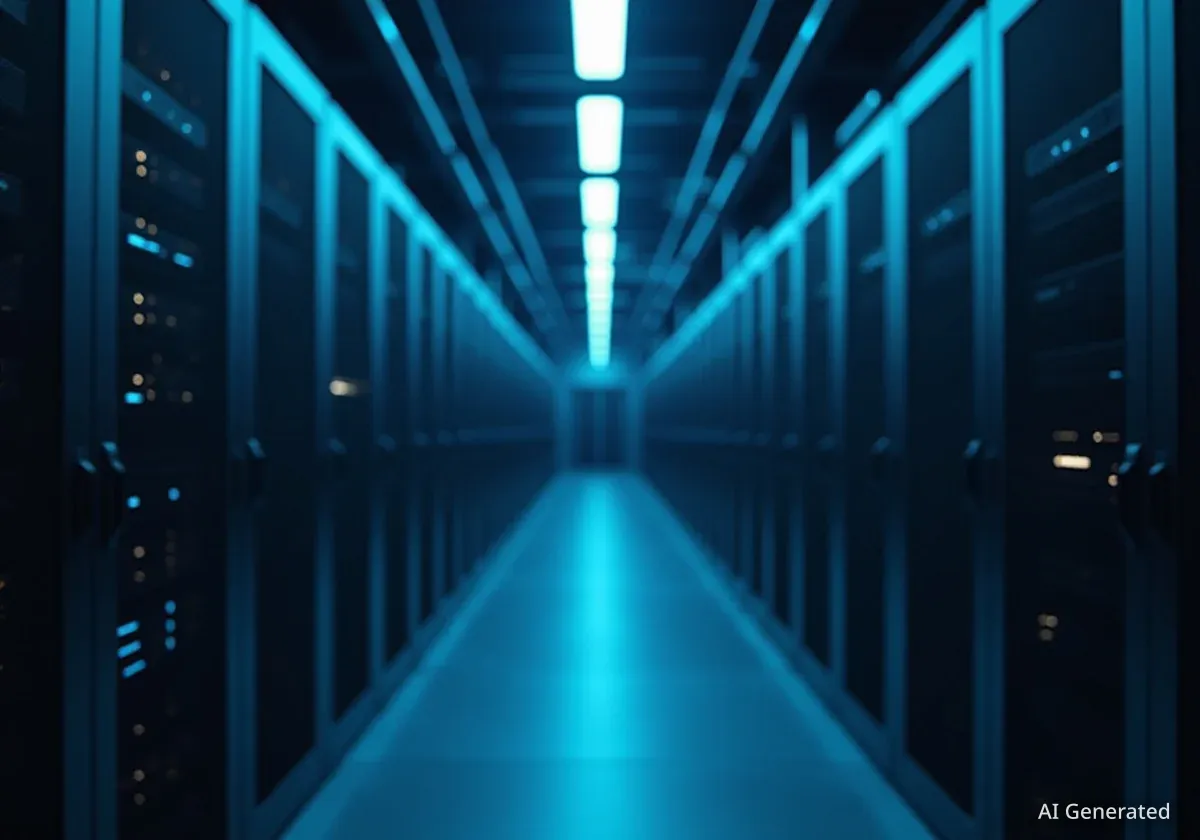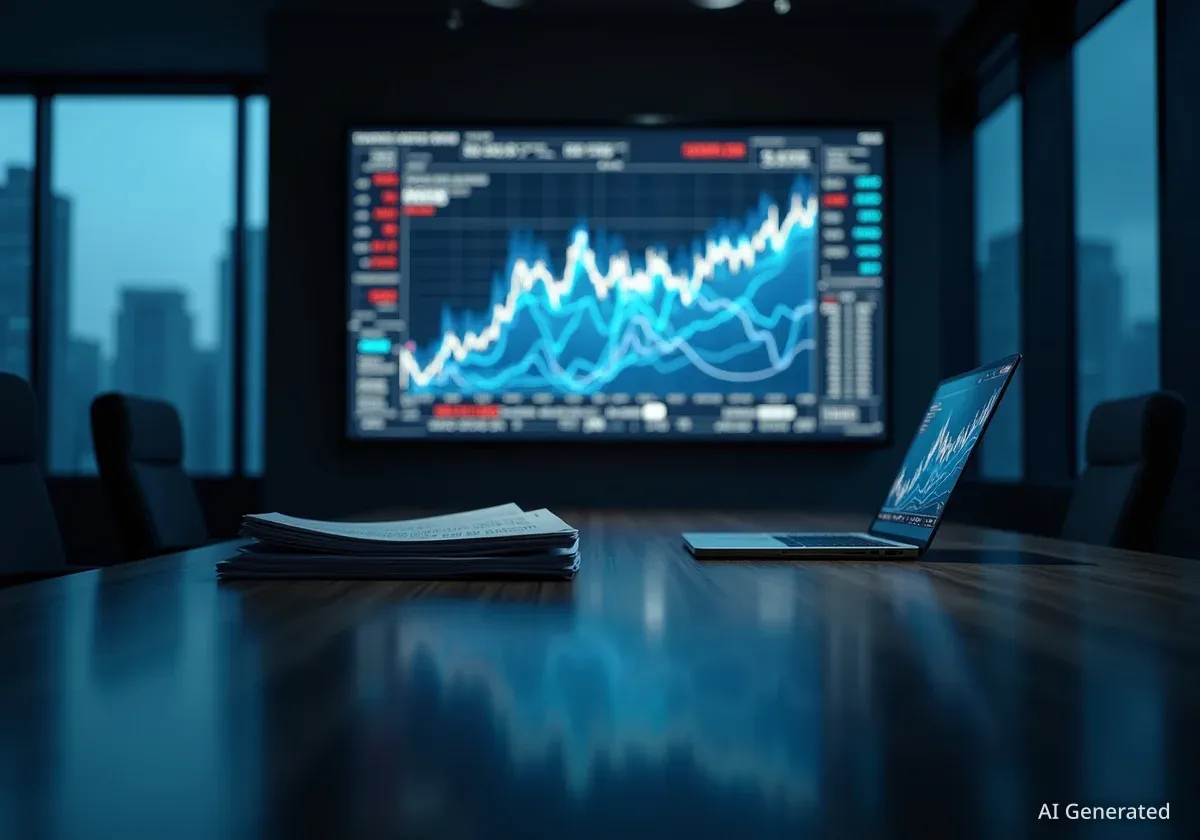Billionaire investor David Einhorn has issued a significant warning about the massive spending surge in the artificial intelligence sector, suggesting the current investment frenzy could lead to substantial financial losses. The Greenlight Capital founder described the capital being deployed as "extreme" and raised concerns about potential "capital destruction," drawing parallels to previous technology investment cycles that ended poorly.
Key Takeaways
- Hedge fund manager David Einhorn warns the current level of AI spending is "extreme" and could result in significant "capital destruction."
- Major tech companies like Microsoft, Google, Amazon, and Meta are investing tens of billions of dollars quarterly into AI infrastructure.
- Einhorn suggests many companies are investing out of necessity rather than with clear return-on-investment strategies, similar to the dot-com era.
- The current spending boom is compared to the late 1990s internet bubble, which was followed by a market collapse and significant corporate bankruptcies.
Unprecedented Levels of AI Investment
The global technology industry is currently engaged in one of the largest capital expenditure cycles in history, driven entirely by the race for dominance in artificial intelligence. The world's largest cloud providers, often called hyperscalers, are leading this charge, pouring vast sums into building and upgrading data centers.
Recent financial filings reveal the sheer scale of this investment. In a single recent quarter, major tech firms reported staggering capital expenditures. These figures illustrate the immense financial commitment required to compete in the AI space.
Quarterly Capital Spending by Tech Giants
- Alphabet (Google): $22.4 billion
- Microsoft: $24.2 billion ($17.1 billion excluding finance leases)
- Meta Platforms: $17.01 billion
- Amazon: $31.4 billion
Source: Company SEC filings.
This spending is primarily directed at acquiring high-performance graphics processing units (GPUs), with Nvidia controlling an estimated 90% of the market. These specialized chips are essential for training and running the complex large language models that power services like ChatGPT. The spending also covers servers from companies like Dell and Supermicro, advanced memory chips, and massive storage solutions.
Einhorn's Warning of 'Capital Destruction'
David Einhorn, a respected voice on Wall Street for over three decades, expressed deep skepticism about the sustainability of this spending. Speaking at a Simplify Asset Management panel, he used stark language to describe his concerns about the market's direction.
“The numbers that are being thrown around are so extreme that it’s really, really hard to understand them,” Einhorn stated. He believes there is a "reasonable chance that a tremendous amount of capital destruction is going to come through this cycle."
Einhorn's primary concern is the rationale behind the investments. He suggested that many companies are spending billions on AI infrastructure not because of a well-defined business plan with predictable returns, but out of a fear of being left behind. This "because we have to" mentality, he argues, often leads to inefficient capital allocation and eventual financial losses.
The sentiment is amplified by industry leaders. OpenAI CEO Sam Altman has publicly stated that his company expects to spend trillions of dollars in the long run to achieve its goals, highlighting the immense financial scope of developing advanced AI.
What is Capital Destruction?
Capital destruction occurs when invested money fails to generate a return and the initial capital is lost. This can happen when companies invest heavily in assets or technologies that become obsolete, fail to find a market, or do not produce the expected revenue, leading to write-downs and bankruptcies.
A Flurry of Multi-Billion Dollar Deals
The concerns raised by Einhorn have not slowed the pace of major AI-related transactions. In recent months, a series of high-profile deals has underscored the industry's commitment to securing AI capacity and talent at any cost.
These agreements involve some of the largest players in technology and cloud computing, locking in billions of dollars in future spending and capacity commitments.
- Oracle and OpenAI: The two companies signed a five-year cloud deal valued at an estimated $300 billion.
- Nvidia and OpenAI: Nvidia is reportedly planning a $100 billion investment to support OpenAI's infrastructure expansion.
- Microsoft and Nebius: A $17.4 billion agreement was committed to secure AI infrastructure.
- Nvidia and CoreWeave: Nvidia has provided a backstop for CoreWeave's unused AI capacity, valued at $6.3 billion.
Market forecasts predict this trend will continue. According to analyst Beth Kindig, the AI data center server market is projected to grow at a 38% compound annual growth rate (CAGR) from 2024 to 2029, expanding from $115 billion to over $580 billion. Research firm Gartner projects total global AI spending will reach $1.5 trillion in 2025 and exceed $2 trillion in 2026.
Historical Parallels to the Dot-Com Bubble
Einhorn's warning evokes strong comparisons to the dot-com bubble of the late 1990s. During that period, companies invested heavily in internet infrastructure, leading to a massive surge in the stock prices of technology hardware companies like Cisco and Intel.
According to the Federal Reserve Bank of San Francisco, real IT investment grew by an average of 24% per year between 1995 and 2000. However, this speculative boom was followed by a severe downturn.
When the bubble burst, spending collapsed. The San Francisco Fed reported that in 2001, real IT investment fell by nearly 11%. The stock market followed suit, with the S&P 500 experiencing three consecutive years of negative returns:
- 2000: -10.1%
- 2001: -13.0%
- 2002: -23.4%
Many pre-revenue companies went bankrupt, and even established survivors took many years to recover. Cisco Systems, a market leader, has still not surpassed its stock peak from March 2000. Intel took until 2014 to reclaim its dot-com era high. Whether the current AI boom will follow a similar trajectory remains uncertain, but the parallels in spending behavior have put seasoned investors like Einhorn on high alert.





